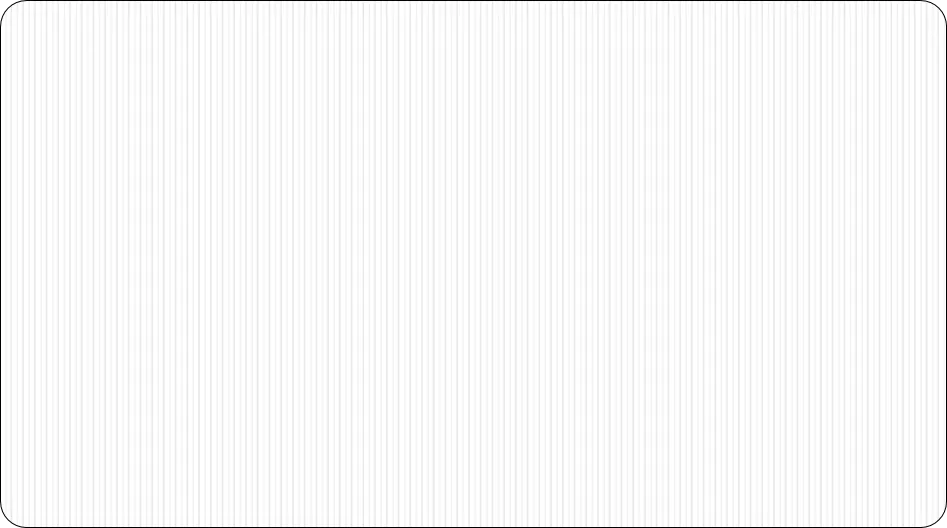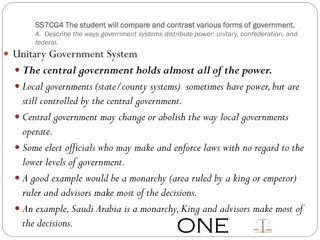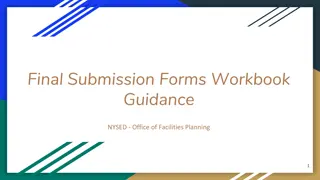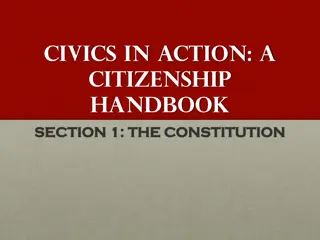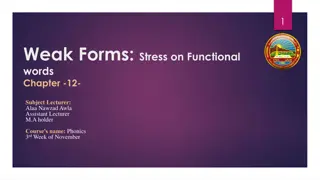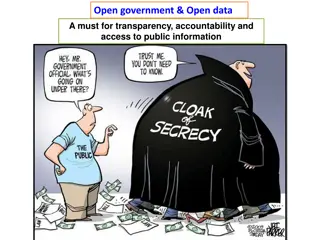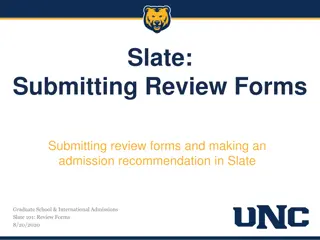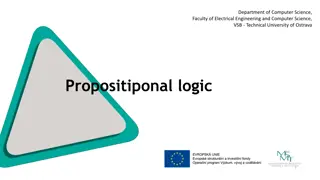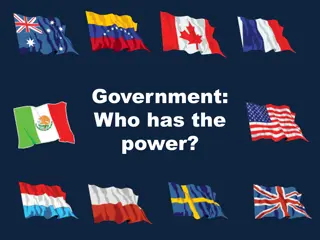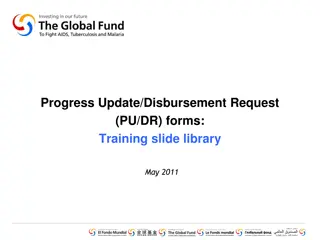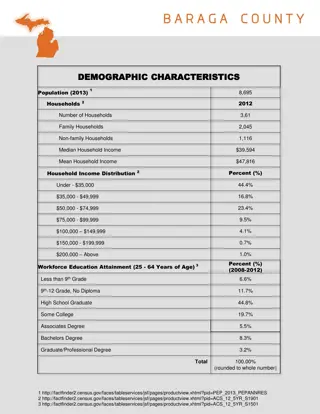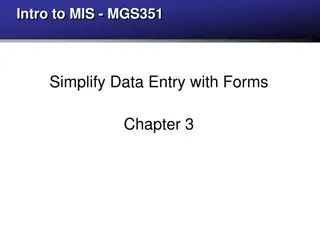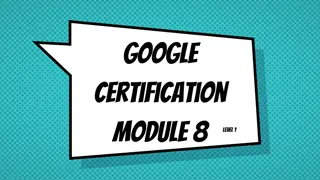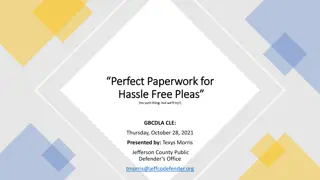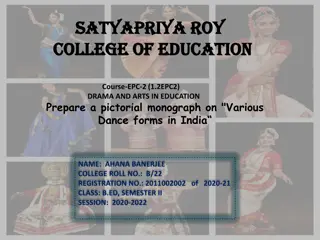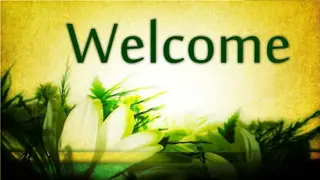Different Forms of Government
Exploring various types of government, from monarchy to democracy, and discussing the roles and structures that define each system. Discover insights into absolute monarchy, constitutional monarchy, and more, shedding light on the diverse ways societies are governed.
Download Presentation

Please find below an Image/Link to download the presentation.
The content on the website is provided AS IS for your information and personal use only. It may not be sold, licensed, or shared on other websites without obtaining consent from the author.If you encounter any issues during the download, it is possible that the publisher has removed the file from their server.
You are allowed to download the files provided on this website for personal or commercial use, subject to the condition that they are used lawfully. All files are the property of their respective owners.
The content on the website is provided AS IS for your information and personal use only. It may not be sold, licensed, or shared on other websites without obtaining consent from the author.
E N D
Presentation Transcript
Types of Government Unit 10
Vocabulary Terms government power monarchy divine right theory absolute monarchy Louis XIV constitutional monarchy republic Thomas Jefferson democracy direct democracy representative government dictatorship Idi Amin Dada Robert Mugabe Joseph Stalin totalitarianism theocracy supreme leader oligarchy
Essential Question What is the best form of government?
What is Government? Government the organization that people set up to protect their community and to enforce its rules Role of government is to protect the lives, liberties, and property of members of the community Governments also provide services that individuals cannot provide on their own Governments are given power the authority to use force to exercise authority
Types of Government Monarchy rulers inherit power; when a ruler dies, power automatically passes from one of the monarch s children or close relatives Oldest form of government Monarchs (kings, emperors, sultans) surround themselves with followers and advisors who help them govern http://t0.gstatic.com/images?q=tbn:ANd9GcRIVyexhCuyZZdLj_WTd2aIyFWh-cUKAMK8bDE4B93xmanAfJwLYw:static.ddmcdn.com/gif/henry-viii-blood-disorder-110311-676154-.jpg http://blogs.telegraph.co.uk/news/files/2013/07/Royal-Family-446x288.jpg
Types of Government Absolute monarchy Kings or queens claimed to have absolute power This power was often claimed to be granted by divine right Divine right theory belief that a king is God s deputy on Earth, and that royal commands express God s wishes Ordinary people had no rights or freedoms except those allowed by the monarch Saudi Arabia, Oman, and the UAE, are the only absolute monarchies remaining in the world (most are transitioning)
Types of Government Constitutional monarchy Shares power with an elected legislature Monarch rules as the symbolic head of state, while the elected members of Parliament govern the country Examples Great Britain hereditary monarch, elected House of Commons Japan Kuwait File:Government constitutional monarchy.svg
Types of Government Republic Power is held by the people and the representatives they elect These elected representatives make decisions for the people based on their wants and needs Government without a king or queen Examples Roman Republic (509 BC 27 BC) The United States of America (established in 1776) South Sudan (established in 2011)
Types of Government Democracy government authority is based on the will of the people People are guaranteed certain basic rights, and are granted the freedom to criticize the government freely Direct democracy People vote on issues directly Developed in ancient Athens in the 5th century B.C., as citizens of ancient Athens assembled to directly make their decisions regarding the city- state
Types of Government Representative democracy Developed by the ancient Romans Different social groups elected their own representatives, who met in assemblies, while the nobles met in the Senate Government power was divided between two branches, who voted on various issues
Types of Government Later democracies Various countries developed their own national assemblies England land owners elected representatives to the House of Commons, one of two chambers of Parliament United States of America each colony had its own colonial legislature; following independence in 1776, representatives are elected to Congress, either in the House of Representatives or the Senate Latin America after achieving independence from European powers in the late 19thcentury, several countries became democracies Europe many countries became democracies following World War I Asia many countries became democracies following World War II Africa in 1957, Ghana became the first sub-Saharan African country to become a democracy
Types of Government Dictatorship An individual leader or political party enjoys great power and total control over the citizens Seizes control by force or is placed into a position of authority by others Since 1945, Latin America, the Middle East, and Africa have been common areas for military dictatorships, as the military sometimes seized power and established a dictatorship Uganda Idi Amin Dada became a brutal military dictator while serving as president from 1971-1979 Zimbabwe although Robert Mugabe was elected to power, he quickly became a dictator who blocked his opponents from voting Iraq Saddam Hussein (ruled 1979-2003) was known for torturing those who spoke out against him and for invading neighboring countries to increase his own wealth and power Chile Augusto Pinochet (ruled 1973-1998) seized power from the democratically elected president, who died under mysterious circumstances, and was known for killing and torturing his enemies
Types of Government Dictators are free to do as they please, while other citizens have few rights and very little influence over the government Decisions can be made quickly under the rule of a dictator Ancient Romans used to appoint dictators when they were at war and needed strong leadership When the war was over, the dictator was supposed to give up his power Modern-day dictators tend to hold on to power until they are overthrown Sometimes dictators hold elections to obtain legitimacy for their government While an election victory might justify the rule of the dictator, it is often times not the will of the people, as there are no opposition parties and people are afraid to criticize the ruler
Types of Government Totalitarianism System of government in which the government controls all aspects of individual life (total control) People can only belong to organizations controlled by the government this means no separate political parties, labor unions or other organizations are allowed The government controls or prohibits all churches and religious groups
Types of Government Modern dictators Adolf Hitler Germany German politician and leader of the Nazi Party, whose foreign policy caused the onset of World War II Responsible for the genocide of 6 million Jews and millions of others whom he deemed to be inferior
Types of Government Joseph Stalin Soviet Union Communist dictator who replaced Lenin in 1924 as the leader of the Soviet Union Turned the Soviet Union into a totalitarian state Anyone who opposed him was sent to icy gulags (prisons) in Siberia
Types of Government Mao Zedong China Ruled from 1949-1976 Highly controversial figure supporters credit him with modernizing China and increasing its world influence, while critics believe him to be a dictator who oversaw human rights abuses through starvation and forced labor
Types of Government Theocracy Government run by religious leaders The government claims to be directed by God, or divinely blessed No separation of church and state, and citizens of other faiths are often excluded or expelled Early theocracies Pharaohs of ancient Egypt Emperor of the Byzantine Empire Pope over territories in Italy Puritan ministers in colonial Massachusetts
Iran Types of Government Iran s Theocracy Muslim leaders seized power in Iran in 1979 The Iranian constitution emphasizes the importance of religion and Islamic law (Sharia) Iran is considered to be a theocratic republic , as voters elect the President and representatives to the legislature HOWEVER these officials answer to the Supreme Leader, who is the religious leader of the country, and is the head of the government (even above the president) The Supreme Leader (Ayatollah) interprets religious law, can dismiss the President, and can declare war Currently is Ayatollah Ali Khamenei Seyyed ali khamenei.jpg
Types of Government Oligarchy means to rule or to command ; power rests with a small group of people who could be distinguished by royalty, wealth, family ties, education, corporate, or military control Russian Federation (1991-present) many Russian producers in the areas of natural gas, petroleum, and precious metals are seen as oligarchs (possessing great wealth and political influence) South Africa (1948-1994) system of apartheid (racial segregation) enforced by the government, which kept the rights of the black majority curtailed and allowed the white minority greater rights and freedoms United States Supreme Court All of the current 9 justices are alumni of Harvard or Yale law schools
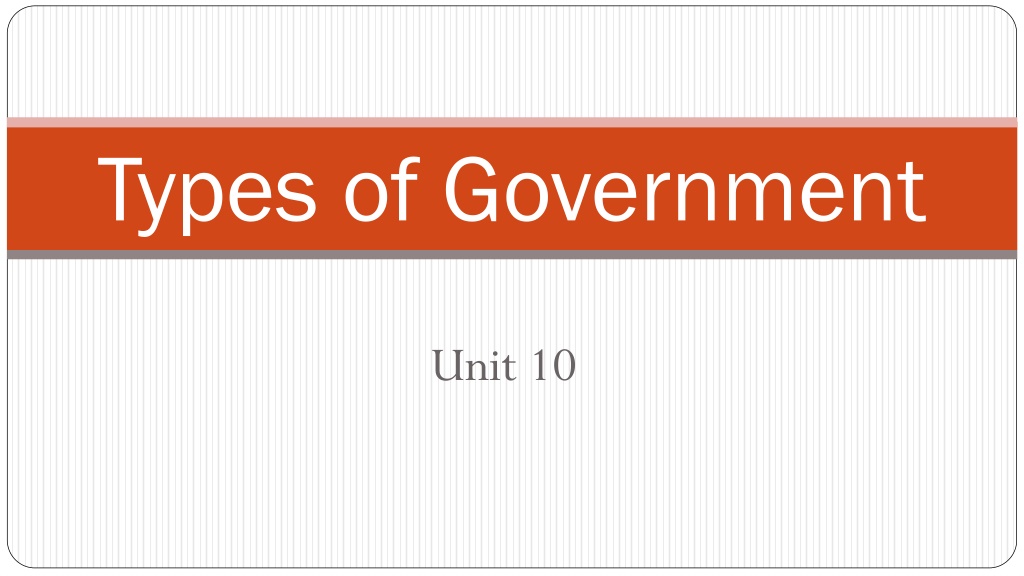
 undefined
undefined
